State of the Union: Seagate's HAMR Hard Drives, Dual-Actuator Mach2, and 24 TB HDDs on Track
by Anton Shilov on February 7, 2019 2:00 PM EST- Posted in
- HDDs
- Storage
- Seagate
- Helium HDD
- HAMR
- Dual Actuator HDD
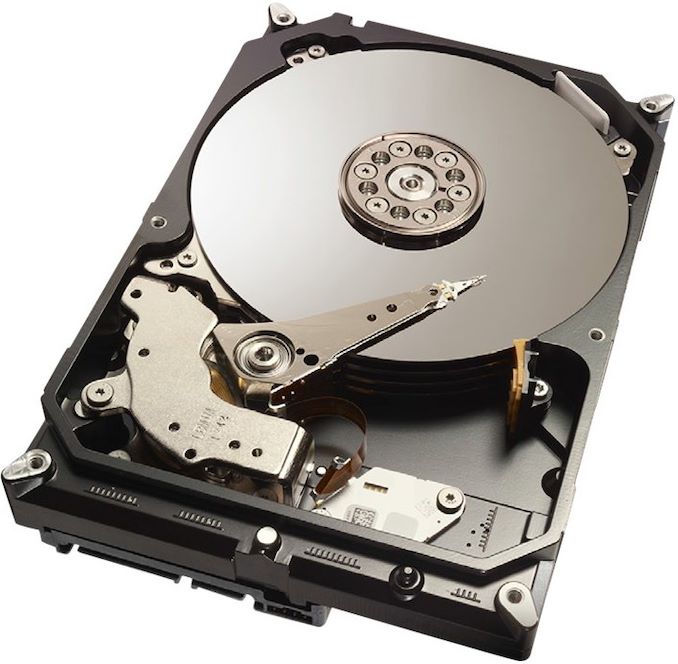
Seagate this week reiterated that the company is on track to launch two crucially important technologies later this calendar year. Firstly, the company plans to start ramping up its 16 TB hard drives featuring heat-assisted magnetic recording (HAMR) technology in 1H 2019. Secondly, the manufacturer intends to launch its first 14 TB HDDs featuring two actuators, up to 500 MB/s sequential read speed, and up to 160 IOPS later this year. Also, the company has stated that it is already testing its next iteration of HAMR that will enable hard drives with capacities up to 24 TB.
Table of Contents
- Need for Storage
- HAMR: Nearly Here
- 24 TB HDDs En Route
- Dual Actuator HDDs Ready for Prime Time
- First Multi-Actuator HDD: 14 TB, ~480 MB/s
- Final Thoughts
| Seagate's Datacenter and Exascale HDD Plans | |||||
| AnandTech.com | H1 2019 | H2 2019* | 2020 | ||
| Capacity | 16 TB | 14 TB | ~20+ TB | 16 ~ 20 TB | |
| Recording Technology | HAMR | PMR | HAMR | ||
| Performance | Over 250 MB/s ~80 IOPS 5 IOPS/TB |
~480 MB/s ~160 IOPS ~11 IOPS/TB |
? ~80 IOPS 4 IOPS/TB |
? | |
| Actuators | Single Actuator | Dual Actuator | Single Actuator | Dual Actuator* | |
| Notes: | *Not confirmed formally | ||||
Need for Storage
The market of hard drives is shrinking in terms of unit sales, but continues to thrive in terms of total capacity shipped as well as revenue. There may be some exceptions (e.g., Q4 CY2018), but the general trend is here. Unit shipments drop because modern laptops cannot accommodate a large 2.5-inch mechanical hard drive, whereas desktops can suffice with just one high-capacity Barracuda Pro-like storage device. What actually drives revenues in modern times are enterprise and exascale cloud datacenter-oriented HDDs that are used to enable services like Azure, Facebook, Gmail, iCloud, Netflix, Prime, and this is just to name a few.
Needless to say, that hard drives aimed at Apple, Facebook, Google, Netflix, Microsoft, and others are the first models to accommodate the latest technologies developed by Seagate (and other manufacturers), which is why it makes sense to pay a close attention to the company’s plans for datacenter HDDs in a bid to understand where the technology is going in general. Some of technologies found in such drives will eventually migrate to consumer HDDs.
HAMR: Nearly Here
HAMR (Heat Assisted Magnetic Recording) is something that Seagate has been working on for over a decade and this year it will finally hit mass production. Among other things, the HAMR technology posed two major challenges that Seagate had to solve. The first one is media itself that can handle a 450°C local heat (made using a laser with an 810 nm wavelength and a 20 mW power) without degrading over time. The second one is a writer with a near-field optical transducer (NFT) that heats the media and which also has to work without flaws for up to a decade or longer. Seagate has developed appropriate media and its writers can handle up to 4 PB per head data transfers, which is more than sufficient for modern enterprise/datacenter HDDs (that are rated for a 550 TB workload a year). In fact, the company says that not only its internally developed media and heads for HAMR HDDs meet datacenter requirements, but so do components designed externally as well.
Seagate officially started to ship its fully functional single-actuator Exos 16 TB HAMR-enabled helium-filled HDDs to select global hyperscale and OEM partners in early December for demonstration purposes. These drives are drop in compatible with existing server infrastructure and power consumption per unit does not exceed 12 Watts. In fact, it is in line with power consumption with other helium-filled HDDs since NFTs do not consume a lot of power at all.
Earlier this week Dave Mosley, CEO of Seagate, said that the company’s HAMR drives will be launched commercially in the first half of this year and will ramp after its partners validate them.
24 TB HDDs En Route
While Seagate is gearing up to launch its Exos 16 TB HDDs officially in the coming weeks or months, the company promises that its HAMR technology will enable it to release hard drives featuring ~18 TB ~ 20 TB or even higher capacities sometime next year. Furthermore, Seagate has already tested tech that will be used for 24 TB HDDs.
Late last year the company said that it had successfully demonstrated platters featuring a 2.381 Tb/in2 (Terabits per square inch) areal density in spinstand testing, which basically means a drive without an enclosure on a test bed. This areal density enables Seagate to make 3.5-inch platters with a 3 TB capacity. Eight of such disks can be used to build a 24 TB HDD. When it comes to longer-term future, Seagate once said that it had developed media with up to 10 Tb/in2 areal density in the lab.
Dual Actuator HDDs Ready for Prime Time
Another of Seagate’s technology that made headlines last year was the company’s Multi-Actuator Technology (MAT) designed to improve sequential and random read and random write performance of hard drives. On a high level, MAT improves MB/s and IOPS performance of HDDs, but a deeper look quickly reveals that this tech is crucial for the upcoming generations of datacenter hard drives in general and not only because of pure performance numbers.
It is well known that operators of exascale datacenters keep power consumption of servers and individual components in check because they can supply a relatively finite amount of power and remove a limited amount of thermal energy. It is also known that the majority of cloud datacenters use SSDs for frequently accessed data and nearline (near online) HDDs to store data that is accessed a bit less regularly. SSDs enable operators of the said datacenters to provide certain services instantly, but even when they need to access data from hard drives, there is a strict standard when it comes to time they need to access their data within their datacenter.
In general, today’s 3.5-inch HDDs offer random performance of 6 – 10 IOPS per terabyte, which is sufficient for contemporary datacenters and is enough to ensure their quality-of-service requirements. Meanwhile, as hard drives gain capacity, their random performance per terabyte drops and once it drops below 5 IOPS per TB (which is believed to be the lowest target for many modern datacenters), such HDDs will no longer meet service level agreement and therefore QoS requirements. Consequently, operators who do not meet their IOPS per TB requirements (whether these are 4, 5, or 7 IOPS per TB) need to either reduce the amount of capacity they use per drive (i.e., buy smaller drives, or pay for capacity they cannot use), or demand drives that offer a higher I/O performance. This was explained Jason Feist, Seagate’s Director of Technology Strategy and Product Planning who is responsible for the company’s datacenter product roadmap.
At present, Seagate can tune hard drives to deliver I/O that its customers require by implementing command queuing and latency-bounded I/O (LBIO) in firmware (i.e., lower performance), but at some point, these methods will cease to work efficiently. In particular Seagate says that at ~16 TB and beyond more and more customers (but not all of them) will need HDDs that could physically feature a higher I/O performance.
To improve I/O performance of next-generation hard drives, both Seagate and Western Digital plan to install two (or more) sets of actuators into a single HDD. The actuators are to be outfitted with their own arms/heads as well as magnets to position them, but will use one pivot. Therefore, the actuators will work autonomously, basically producing parallelism within a single HDD. As hard drives gain ability to read or write with more than one head at any given time, their random read/write performance will scale with the number of actuators. Sequential read/write performance of HDDs will also increase all the way to 480 MB/s (in case of the first-gen MAT-enabled HDDs), but as it will depend on numerous factors, it is hard to make predictions about throughput of next-gen hard drives.
The extra components needed for two independent actuator assemblies (and a considerably more sophisticated HDD controller) will make such HDDs a bit costlier to manufacture when compared to today’s models. This is a reason why going forward Seagate will have at least two lineups of HDDs for hyperscale workloads: one guaranteeing optimal IOPS per TB with multiple actuators and another guaranteeing minimum IOPS per TB and aimed at customers who can manage required performance levels.
First Multi-Actuator HDD: 14 TB, ~480 MB/s
Seagate’s first-generation MAT-enabled HDDs, dubbed Mach2, use two actuators operating on a single pivot point (along with 8 platters and 16 heads). These drives are set to feature a 14 TB capacity, 480 ~ 500 MB/s sequential read/write performance, as well as up to 160 IOPS. What is not completely clear is how much power will these HDDs consume, as the only thing that Seagate says is that they will consume significantly less than two HDDs. The key thing here is that the drives will still be drop-in compatible with 3.5-inch bays, which is the most important thing for operators of exascale datacenters.
Seagate says that it had supplied prototypes of its Mach2 HDDs to its partners and such drives had been used for “live production traffic” for months now. Their volume ramp will begin later this calendar year, yet Seagate does not elaborate.
Final Thoughts
With plans to launch two crucially important technologies in 2019, this year will be fundamentally important for Seagate. The company is ahead of its rivals with its HAMR and multi-actuator technologies, but now it needs to execute and deliver appropriate HDDs to interested parties. Next year will also be important for Seagate as it will have to bring together its HAMR and multi-actuator technologies and offer rather unique drives to its customers.
As noted above, many technologies originally developed for enterprise and exascale datacenter hard drives usually migrate to HDDs aimed at high-end desktops, workstations, and NAS. Obviously, both HAMR and MAT make a great sense for all of the aforementioned applications, but it remains to be seen which of the technologies will be used for “civil” PCs and storage devices first.
Related Reading
- Seagate Starts to Test 16 TB HAMR Hard Drives
- Seagate’s Multi Actuator Technology to Address HDD IOPS Woes
- The Evolution of HDDs in the Near Future: Speaking with Seagate CTO, Mark Re
- 16 TB MAMR Hard Drives in 2019: Western Digital
Source: Seagate


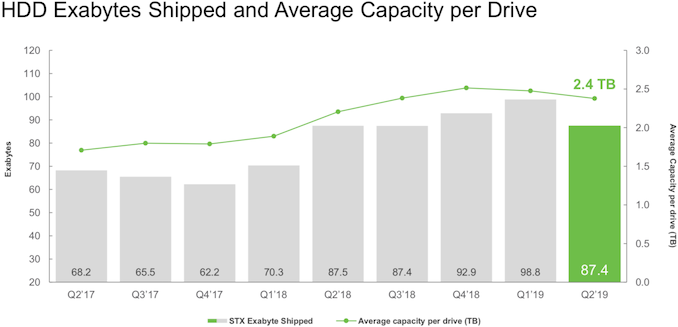
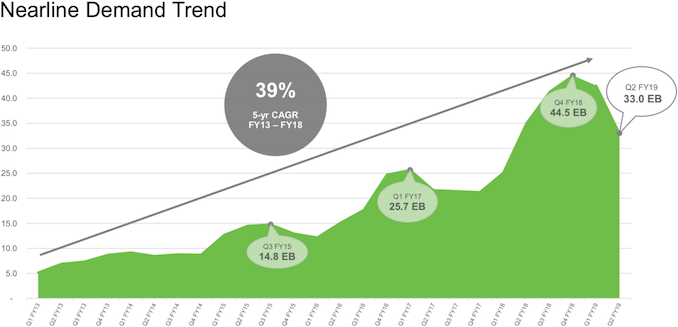
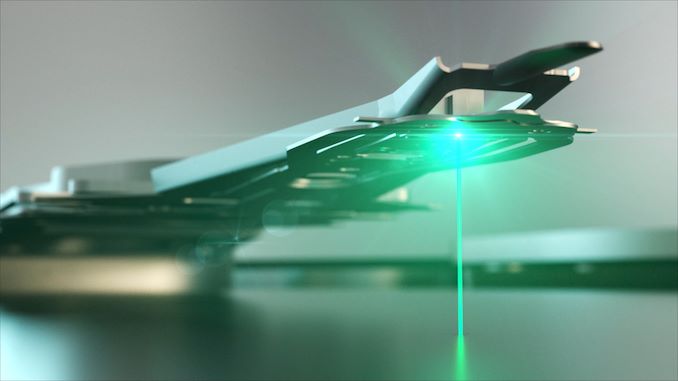

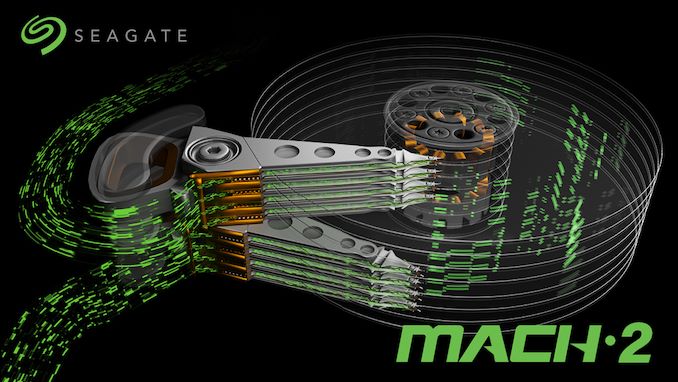
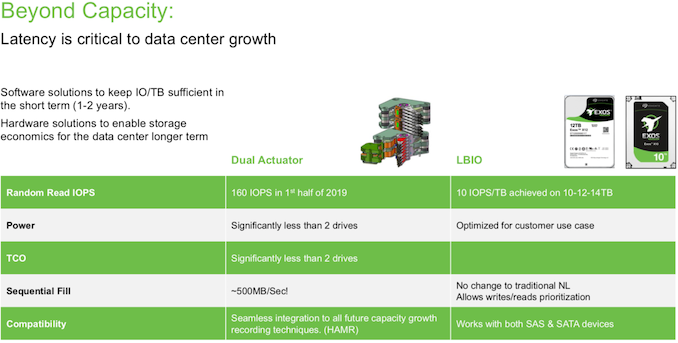
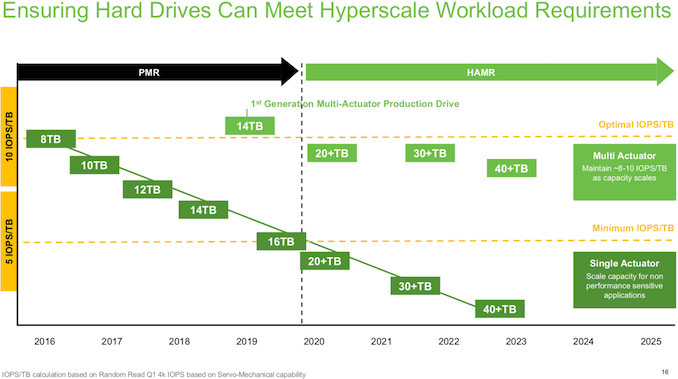








54 Comments
View All Comments
alacard - Thursday, February 7, 2019 - link
Ah ok, so their 3/6 TB drives are known to be "problematic", OK.. If you know it then Seagate MUST know it too, i have 'x' number of them. Will Seagate stand behind them and retrieve all my data from the dead drives and then give me my money back because they're all broken and everyone knows it?Stop shilling for these bullshit companies Reflex. Dong so makes you nothing more than a comedic stooge.
Reflex - Thursday, February 7, 2019 - link
Backblaze has been tracking this for a while now. I'm not in alignment with directly comparing their usage patterns with home use, but as an apples to apples comparison you can pretty easily see which generations of drives have issues for each manufacturer and which do not.Also, who am I 'schilling' for here and who is paying me for such? I need to collect a check
azazel1024 - Friday, February 8, 2019 - link
And beyond that, they give a warranty. Yeah, they'll stand behind it if it dies within that period. Is it a crappy corporate practice if they didn't replace drives if they have MASS failures at say 1 year and 1 day? Absolutely, but really all they are guaranteeing is that their product will be free of defects for 1 year.That is it. I have 4 Seagate 3TB drives that have been ticking along fine for...3 years now? Maybe it has only be 2 and some change. No issues. SMART data looks good. Sure I worry about it, but I'd worry about any set of drives. Which is why my server mirrors my workstation and vice versa. And I have a 5TB external drive that I back-up to about once every 1-3 months that sits in a fire proof safe. It sure ain't totally disaster proof, but it should provide redundancy against almost anything like a likely data loss scenario (I've accidently deleted folders I shouldn't have and discovered it months later only to have to recover it from my cold storage drive. I've accidently killed the RAID array by accident when upgrading my server and had to copy all of my data back over from my desktop. I had a drive die (2TB Samsung drive when I was running a 2x2TB RAID0 array in both machines about 4 years ago. I replaced it and then another drive started to throw some pending errors, so I replace both arrays with my 2x3TB Seagate arrays because I got the drives for cheap (about $65 each at the time)) that I was able to replace and had to copy over everything. And on plenty of occasions I've accidently deleted a file or folder and was able to copy it back over from my server or from my desktop (as appropriate. Only had to go to cold storage ONE time. So far). That is also why I don't do daily backups or constant backups.
It gives me some breathing room to find my screw ups.
Some stuff it would be annoying if I lost a video I spent awhile transcoding, but I'll just rip it from my BR again. Others would be catastrophic, like I lost one or more (or all!) of my pictures from a family vacation. This is also why I don't delete the pictures off my camera's SD card until the card starts getting close to full and I might need more space for whatever event I am taking pictures at.
I pull them all to my desktop ASAP, delete bad ones, edit good ones, convert to JPEGs and then I will let it backup everything from that night to a week later depending on when during the week it was. I don't delete the card till it has backed up.
This way I always have at least 2 copies of anything at any given time (and occasionally 3, or 4. And some pictures I keep on my cloud storage account also. So on rare occasions, 5 copies of a file).
saratoga4 - Thursday, February 7, 2019 - link
>Putting your trust in Seagate to store your data long term is like kindly and gently placing your trust in a bucket of acid.Seagate's disks have been the most reliable you can buy the last several generations: https://www.backblaze.com/blog/2018-hard-drive-fai...
FWIW I'm probably going to go with the 10TB models (<1% AFR) in my next NAS.
PeachNCream - Thursday, February 7, 2019 - link
Ugh, don't remind me. I have a 1TB Seagate drive stuffed into a laptop running Samba to host files for my other computers and to act as a backup repository following the premature death of a different 1TB Seagate drive several months ago. It's hard to believe that after all these years, Seagate still foists garbage drives out that die at such an alarming rate.Spunjji - Monday, February 11, 2019 - link
Is the bigger story here that you've had a single Seagate drive fail or that you have a terrible data storage setup?Schmich - Friday, February 8, 2019 - link
Thousands? That's the thing. If you build yourself it's not in the thousands. Annual failure rate of 2% on a harsh environment is a tad high for sure but definitely not as bad as your immature comment tries to say.I rather have multiple fail-safes on a cheaper HDDs than going simply having 1 NAS 1 parity drive WHILST spending those "thousands" of dollars you speak of.
alacard - Friday, February 8, 2019 - link
Uh, I have over a hundred of terabytes of data. Is math so hard that you can't calculate that housing and replicating that would cost thousands of dollars?I do my best to record history as a backup for future generations, and that takes a lot of storage, and I've been burned so bad by Seagate I will gladly tell everyone not to touch their drives. They've earned it.
Reflex - Friday, February 8, 2019 - link
It's the year 3019. Future archeologists are excavating the basement of a typical early 21st century suburban home. "Jackpot" exclaims one! "Look, I found yet another NAS from famed historian alacard!" "That's amazing!" says their companion. "Everyone knows alacard's data caches are by far the most valuable as they were the only historian to avoid Seagate media! Wait'll the Smithsonian catches wind of this!"Seriously, your just being silly now.
PeachNCream - Sunday, February 10, 2019 - link
I see no need to store a hundred TB of data that has any meaning to me. 500GB is pushing it for me and that would include many hundreds of GB of video files that I wouldn't exactly miss because I can stream pretty much everything I need. Looking at the data I store, I really only care about maybe 60GB of it and even that includes relatively unimportant information. The data that really is meaningful to me can fit on a 16GB thumb drive with capacity to grow for years.If you were holding that data for a business reason, then I'd concede the point, but it sounds a lot more like you're just camping atop as much data as you can find just so you have a reason to operate a needlessly complex and expensive storage array (or you're making this up as you go in order to impress people on the Internet that will probably never call you out on the embellishment).